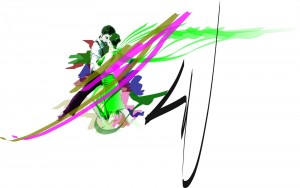By Keith Morris
When I was competing what now feels like 100 years ago, Tango was at one stage my worst marked dance. So I spent quite some time with the great and powerful of the dance world studying this dance. One of the main things that helped me understand this dance was the timing and placing of the feet.
First of all my mind goes back to my first encounter of this fantastic dance at the tender age of 14 when the following advice was given to me by my first dance teachers Stan and Irene Peverall. “If the man dances tango correctly the lady should not be able to tell whether she has been run over or made passionate love to.” In 1967 thinking was a lot more liberal in many ways than it is today!!!!.
Now I realise that some things change with time due to development of movement etc. However some fundamentals just cannot change. In all the technique books I have ever read tango is always portrayed as 2/4. During my research for this article I decided to ask Mr Ashley Frohlick the leader of the Empress Orchestra for his opinion on the time signature of this dance.
Ashley informed me that when he composes a new tune for the Empress Orchestra that he always writes Tango in 4/4 time as this easier for the musician to read. On the occasions that he plays in 2/4 time he directs in half tempo. Stating that the basic rhythmical pattern musically is such that it lends itself more in 4/4 than 2/4. i.e. 4 bass notes par bar , 4 drum and chorded beats per bar and if there is an accent anywhere within the confines of this rhythm is on the end of 4.
When I was competing I was fortunate to be trained by the likes of, Eric Lashbrook, Eric Hancox, Bill and Bobby Irvine, Michael and Vicky Barr George Coad, Benny Tolmyer, Richard Gleave and Anthony Hurly to name just a few. They all agreed that tango should always be counted in 2/4 time. This highlights the difference between the dancer and musician.
To quote from one of the all time greats Len Scrivener in “The Complete Ballroom Dancer” :-“ Each walk takes one beat music. (Tango music is written in 2/4 time, there being two beats to each bar.”)…”That is, he should feel that he retains his weight on the standing foot until the moving foot has almost reached the extent of the stride. Then of course, the weight will be moved forward slowly to the moving foot.” And further Len goes on to say “The reason for the “and” count is dual. First, it will suggest the delay in the weight transference and secondly, as most Tango music has four ½ beats well marked, it enables the dancer to fully use the one beat of music. …Sometimes two of the half beats are tacit, but as the accents are played on the commencement of the 1st and 3rd half beats of the bar, the pause for a ½ beat can easily be felt.” Sadly I never had the chance to study with Len but did have the opportunity to work with former pupils who passed his invaluable advice on.
One thing that has always stuck with me is counting Tango as follows & 1 & 2 & 1 & 2 etc not 1 2 3 4 or in slows and quick’s. The & equating to ½ beat or a quick therefore & 1 equates to a slow or 1 beat of music as stated by Len Scrivener above. This enables the dancer to build up power to move from the standing foot to the moving foot almost like a coiled spring.
The pressure down into the floor through the standing leg on the & count enables the dancer to place the moving foot forward on 1 thus arriving with the feet parallel on the second &. Counting in this manner helps to separate the placing of the moving foot thus eradicating a flowing movement which is often seen in Tango these days on the competition floor. Whilst I realise that there will be a certain amount of body flight there is nowhere near as much as in the other 4 standard “moving” dances.
When placing the moving leg I was always told that it should move in the same manner as a cat stalking it’s pray, thus creating a creeping action across the floor rather than a free flowing action that is out of character with this fascinating and atmospheric dance.
I realise that I may be looking at the dance world through rose tinted glasses but when I judge, examine and train couples I look for those same basic principles that were instilled into me all those years ago.
Of course the Standard Tango as we know it today holds no resemblance to its great granddaddy the Argentine Tango which is a totally different animal.
Keith Morris










